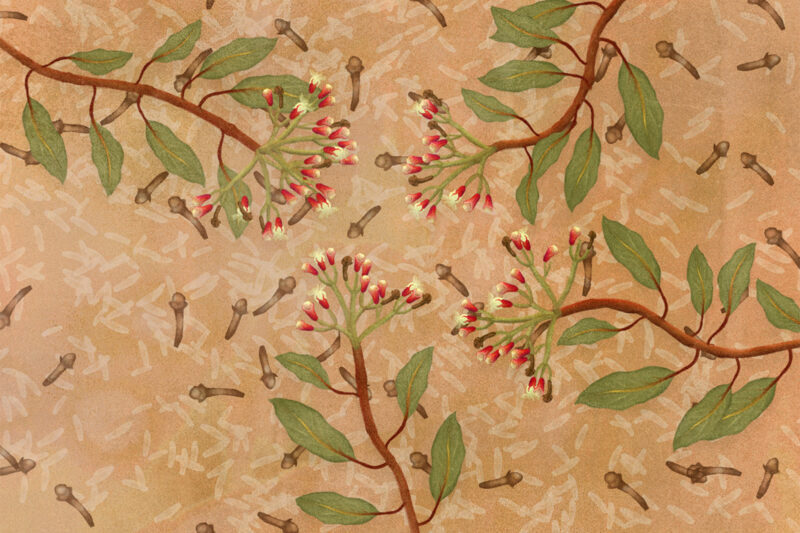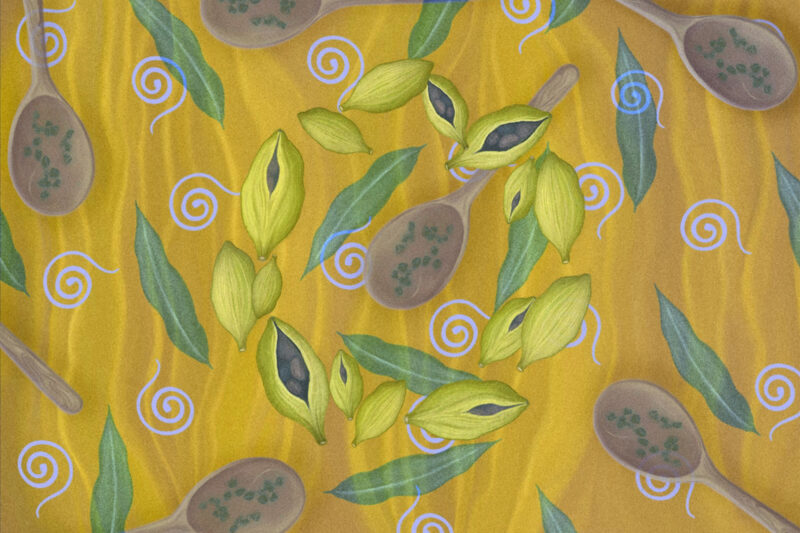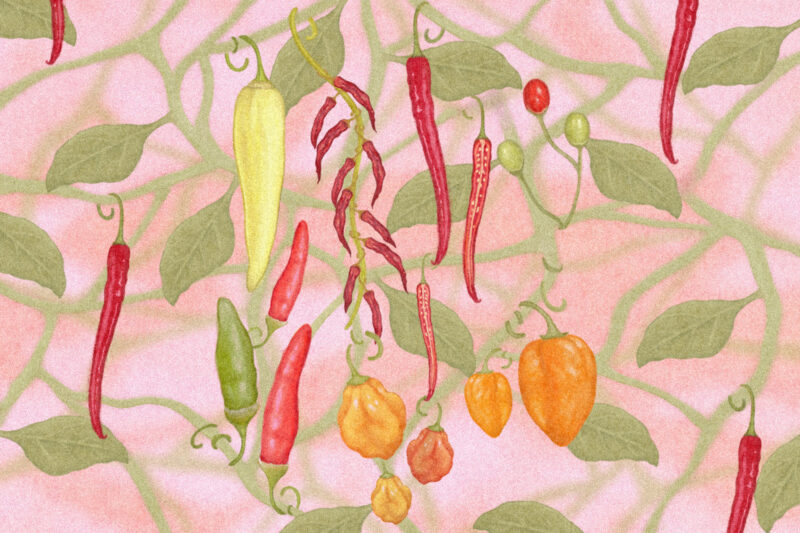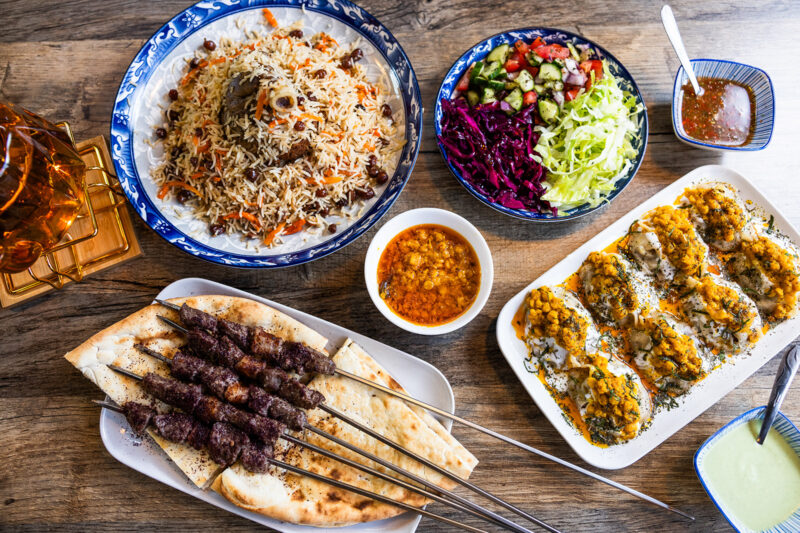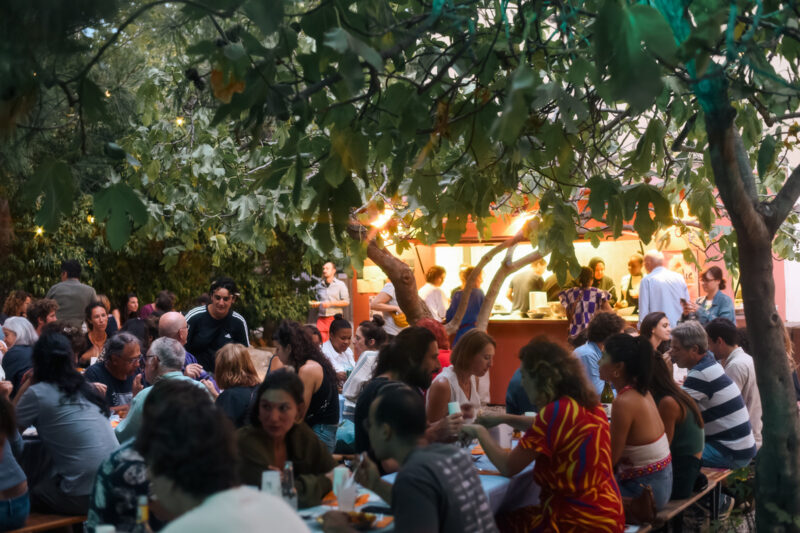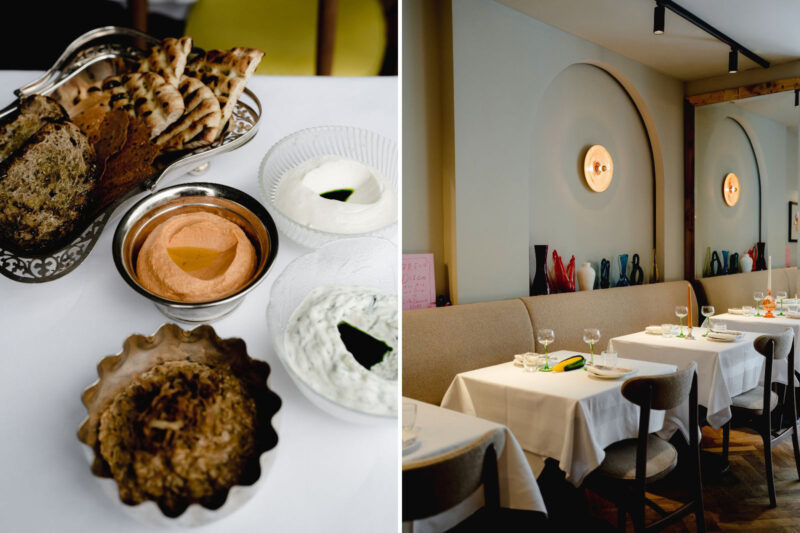Garlic: a true underground hit
From ancient Babylon to viral TikTok recipes, this pungent flavour bomb is deeply rooted in culinary cultures around the world

One of my dad’s favourite snacks is something he calls a garlic ladwa, also known as lasan ja ladu. They are made from leftover rotlo — millet flatbreads — crumbled into a hot oil or ghee and mixed into a paste with young green garlic, then cooled and shaped into balls. Traditionally served with yoghurt or mashed aubergine, they are usually eaten for breakfast.
For those of us raised on sliced mass-market bread, the millet tastes nutty and rustic while the garlic is punchy and lingers hot and pungent in the mouth. The powerful aftertaste is enough to remind you why the hadiths advise Muslim worshippers not to consume garlic before attending a mosque.
I have often wondered about the origin of these desi dough balls. Apparently, they come from Gujarat, on the west coast of India: an area that suffered a series of catastrophic famines in the 19th century and where garlic has long been used as an appetite suppressant. That would explain the local lore that a single one in the morning can keep a busy farmer going until lunchtime.
Garlic is a foundational ingredient in many beloved dishes and condiments across the world, from spaghetti aglio e olio in Italy to Middle Eastern toum and Turkish çilbir (eggs in a garlicky yoghurt). It has also, like many herbs and spices, been used to treat illnesses and to promote good health.
Indigenous to central Asia, garlic is a flowering member of the allium family that grows from a white-skinned bulb which contains the fragrant cloves essential to so many dishes around the world. It is one of the oldest plants to be cultivated and its documented culinary history stretches back thousands of years.
In ancient Babylon, recipes were inscribed in cuneiform on stone tablets, some of which survive to this day. One of the largest collections is the Yale Babylonian Collection in the US, which includes the ingredients required for a savoury pie and lamb stew, both of which include garlic.
In ancient Greece, eating garlic was thought to give courage and strength, while in many parts of Europe — and countless vampire horror films — it has long been believed to ward off evil spirits. A kitchen staple in ancient Persia, it continues to feature heavily in contemporary Iranian specialities such as ghormeh sabzi and ash reshteh. In addition to its culinary use, garlic is an important part of table displays still seen during the Zoroastrian new year celebration of Nowruz. Named “seer” in Farsi, the plant represents medicine and health.
The therapeutic properties of garlic have long been recognised across the globe. In traditional Chinese medicine, it is viewed as an aid for breathing and digestion. Its antiseptic properties were harnessed by British doctors to treat wounds during the first world war and now there is evidence that its consumption can help to lower high blood pressure.
Nations such as France and Spain can thank the Romans for bringing garlic to much of western and northern Europe. Now, it forms the backbone of a plethora of dishes and sauces, from tourine a l’ail to alioli. The British Isles, however, have a more complicated, on-off relationship with the plant.
After the fall of the Roman empire, garlic remained largely absent from English food until the Tudor period, when it was imported in large quantities from Asia for wealthy consumers. During the Victorian era garlic was, once again, viewed as a sophisticated ingredient and associated with the finest of French cuisine, but it still remained out of reach for most people. Now, garlic is taken for granted by home cooks and easily found in the smallest of local supermarkets, thanks to a growing culinary eclecticism that can be traced back to a growing enthusiasm for Mediterranean food in the 1980s.
Now the UK has garlic farms, an annual garlic festival on the Isle of Wight and has taken Nigella Lawson’s 40-clove chicken, Jamie Oliver’s creamy polenta with garlic and basil butter and an array of viral social media recipes to its heart.
One thing that always confused me was why garlic from the supermarket had cloves that were so small and difficult to peel, whereas those from the corner shop were bigger and shed their skin more easily. It’s actually down to breeding. Softneck varieties of garlic tend to be milder and keep for longer, while their hardneck counterparts have a stronger flavour and store less well. The former are more common in supermarkets, while the latter dominate in smaller shops.
While there is no shortage of affordable garlic in the UK, the story may become different in the US. The cultivation of garlic is dominated by China, which produces around 21m tonnes each year. The second-largest producer is India with a mere 3m tonnes. During his first term, President Donald Trump imposed a 10% tariff on Chinese imports, causing the price to double. With the present and recently paused tariff at 145%, costs could skyrocket. All the more reason to grab yourself an extra serving of garlic naan and enjoy.
 Newsletter
Newsletter


